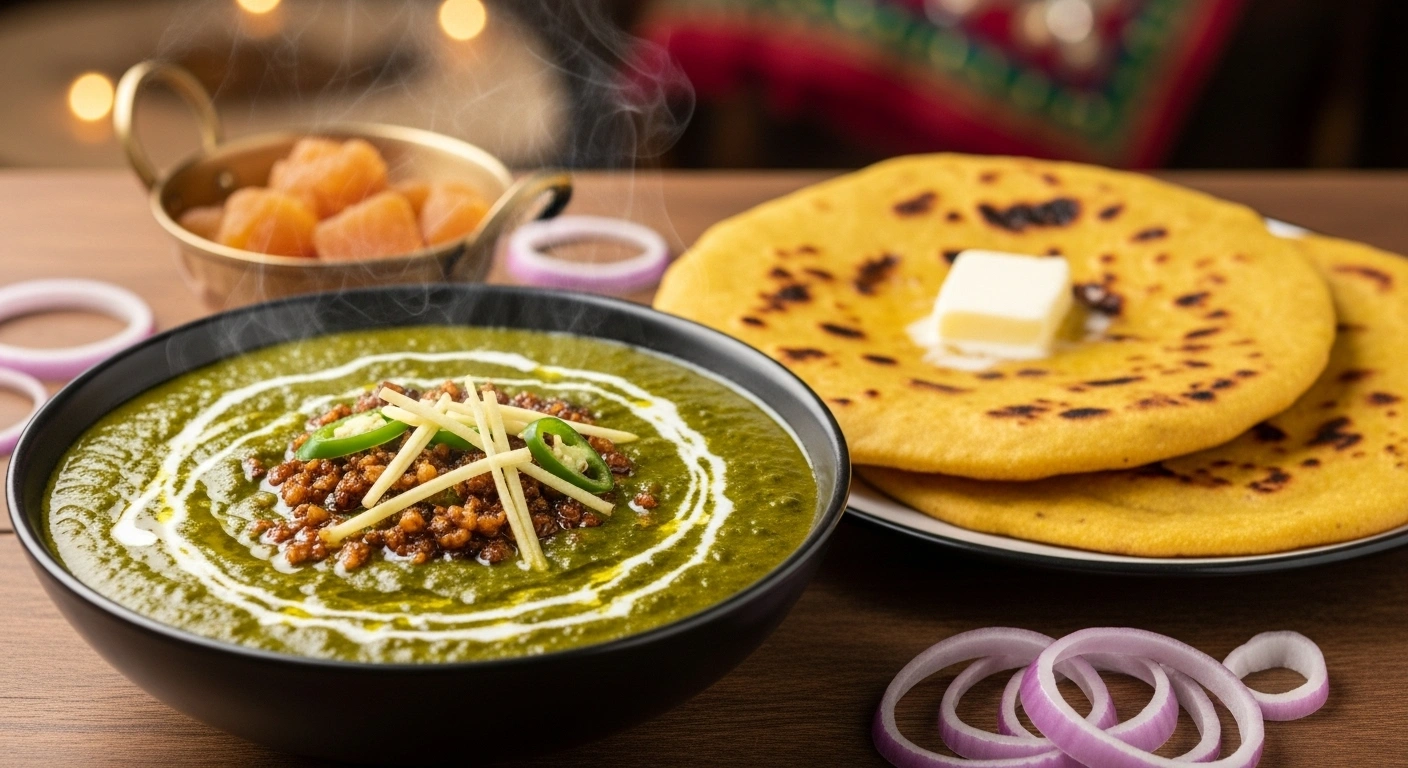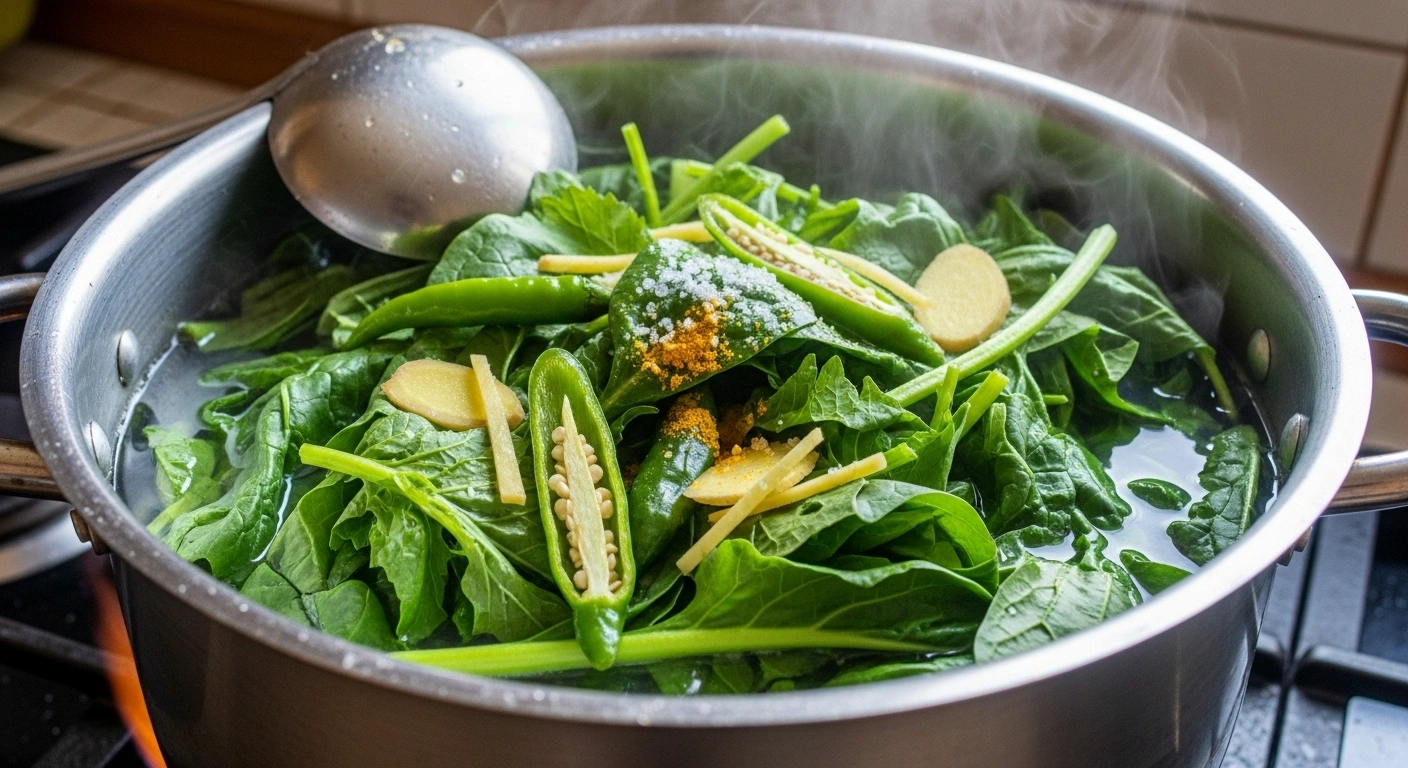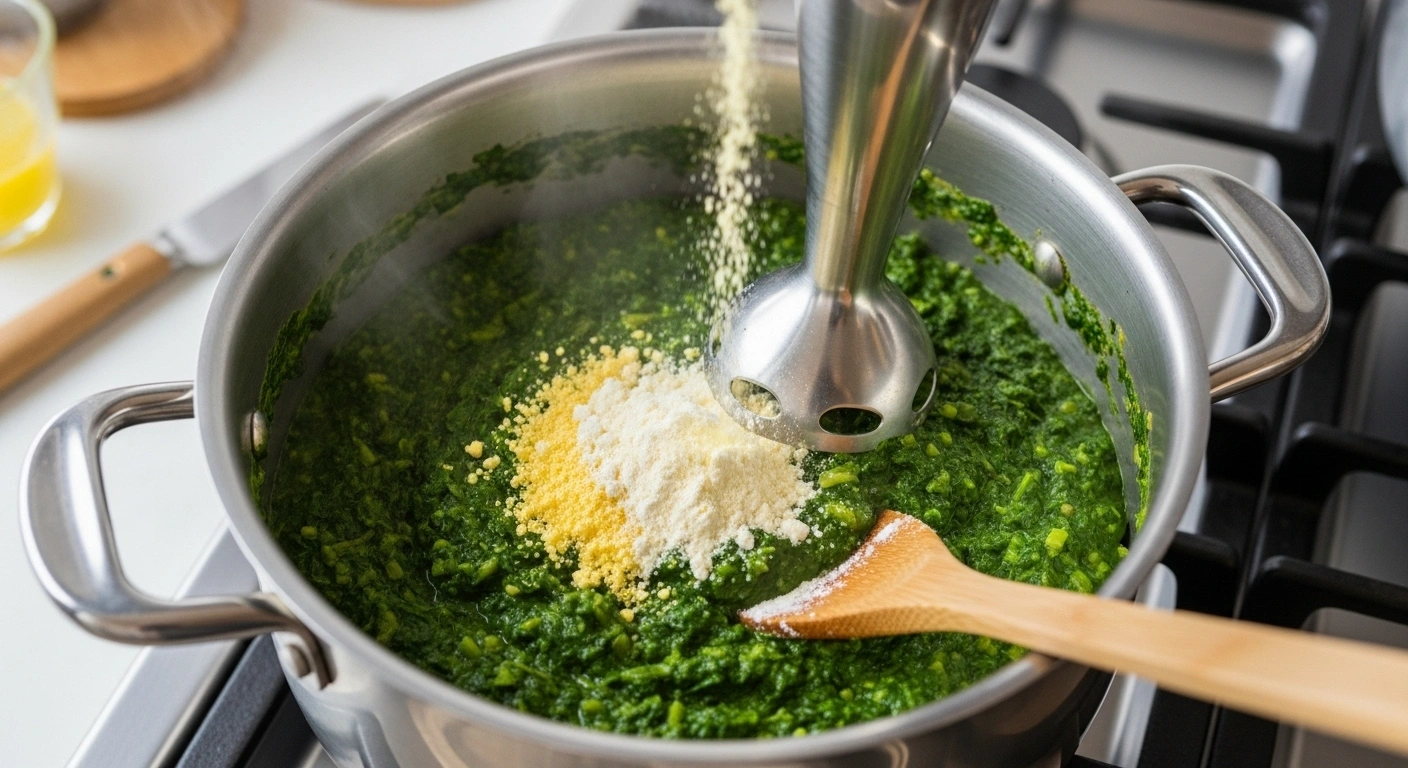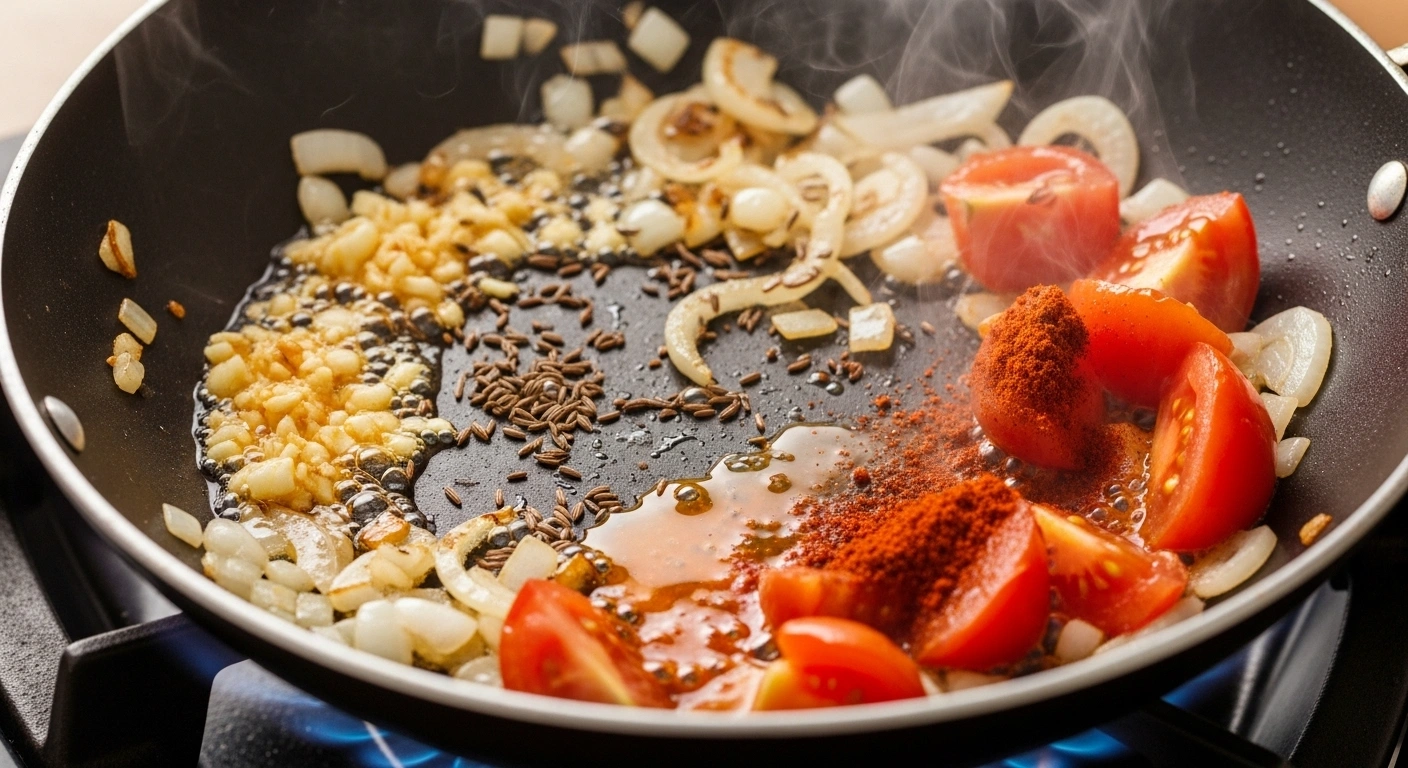Sarson ka saag is one of the most iconic dishes from Punjab, especially relished during the winter season when mustard greens are in abundance. “Saag” refers to any cooked leafy green, and in this dish, mustard greens (sarson) are cooked along with spinach (palak) and bathua (chenopodium greens), which balance out mustard’s natural sharpness.
The greens are slow-cooked with ginger, garlic, onions, and green chillies until they break down into a smooth, earthy mash. Traditionally, this is hand-whisked with a wooden “madani” (buttermilk churner) to achieve a coarse yet creamy texture. A touch of maize flour (makki ka atta) helps thicken the saag.
What elevates the dish is the ghee-based tadka (tempering) with garlic, dried red chillies, and sometimes a little hing. This smoky tadka gives the saag its authentic Punjabi flavour. The dish is hearty, nourishing, and keeps you warm in winter. It’s traditionally served with makki ki roti, white butter, jaggery, and a glass
Sarson ka saag is one of the most iconic dishes from Punjab, especially relished during the winter season when mustard greens are in abundance. “Saag” refers to any cooked leafy green, and in this dish, mustard greens (sarson) are cooked along with spinach (palak) and bathua (chenopodium greens), which balance out mustard’s natural sharpness.
The greens are slow-cooked with ginger, garlic, onions, and green chillies until they break down into a smooth, earthy mash. Traditionally, this is hand-whisked with a wooden “madani” (buttermilk churner) to achieve a coarse yet creamy texture. A touch of maize flour (makki ka atta) helps thicken the saag.
What elevates the dish is the ghee-based tadka (tempering) with garlic, dried red chillies, and sometimes a little hing. This smoky tadka gives the saag its authentic Punjabi flavour. The dish is hearty, nourishing, and keeps you warm in winter. It’s traditionally served with makki ki roti, white butter, jaggery, and a glass of lassi — making it a complete festive winter meal.
Read More






